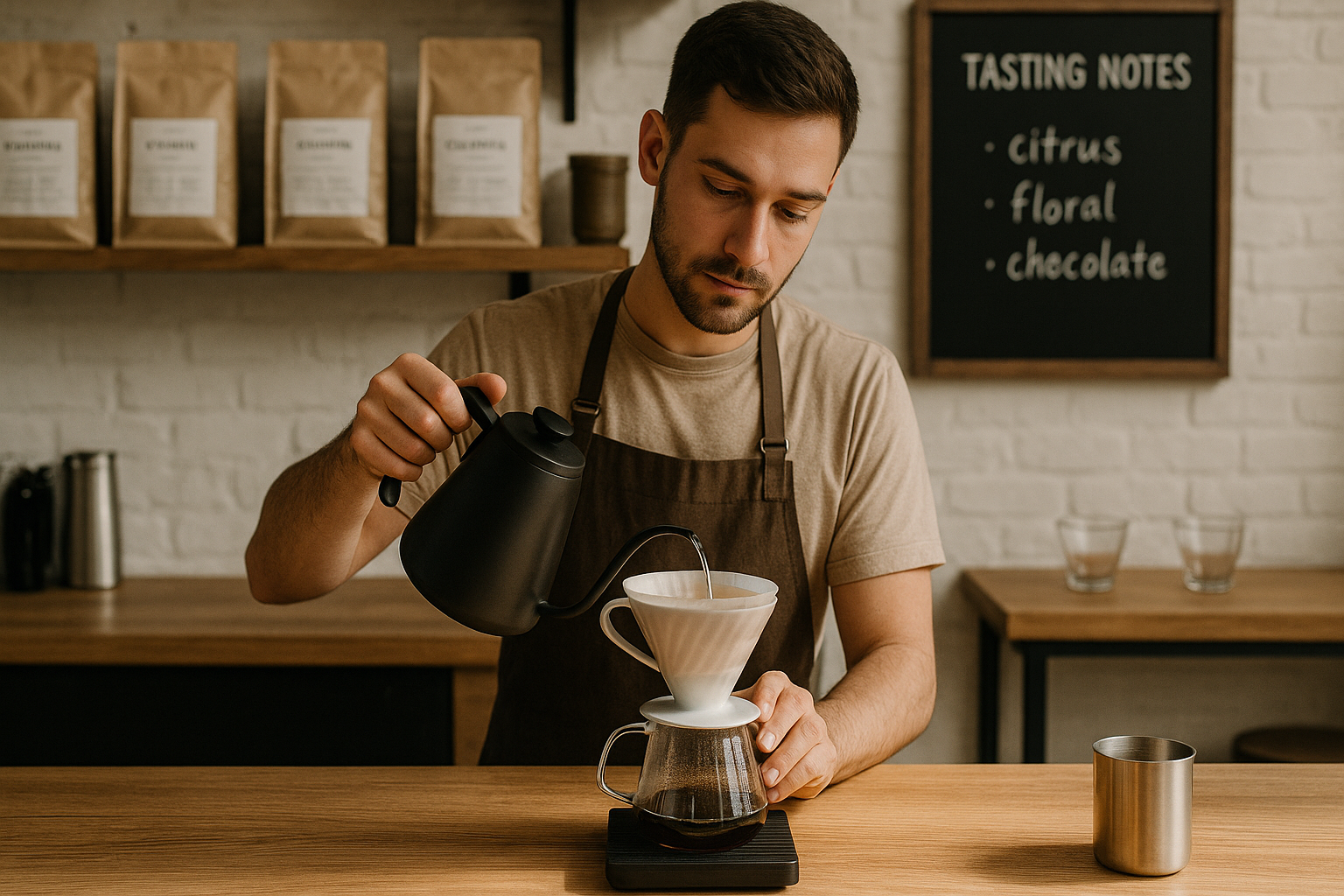You may have heard the term “Third Wave Coffee” floating around cafés or on coffee bags—but what does it actually mean? More than a trend, the third wave is a movement that transformed coffee from a commodity into a craft. It’s about passion, transparency, and treating coffee like fine wine or artisanal food.
In this article, we’ll break down what the third wave is, how it differs from previous “waves,” and why it matters to both drinkers and producers.
The Three Waves of Coffee Explained
☕ First Wave (1800s–1970s): Coffee for the Masses
- Focus: Convenience and accessibility
- Hallmarks: Instant coffee, canned grounds, supermarket blends
- Brands like Folgers and Maxwell House dominated
Main idea: Make coffee widely available, not necessarily great-tasting
☕☕ Second Wave (1980s–2000s): Coffee as Experience
- Focus: Coffee culture and variety
- Hallmarks: Espresso drinks, café chains (Starbucks, Peet’s), origin labeling
- Introduced lattes, cappuccinos, flavored syrups
Main idea: Coffee became social and stylish—but still standardized
☕☕☕ Third Wave (2000s–present): Coffee as Craft
- Focus: Quality, origin, sustainability, and brewing precision
- Hallmarks: Single-origin beans, transparency, light roasts, direct trade, alternative brew methods
Main idea: Coffee is an artisanal product with stories, like wine or chocolate
What Defines Third Wave Coffee?
1. Direct Trade and Farmer Focus
- Roasters build relationships with coffee producers.
- Farmers are paid fairly and often above market rate.
- Encourages sustainable and ethical practices.
2. Transparency
- Labels show detailed info: farm name, altitude, varietal, process method.
- Roasters want you to know exactly where your coffee comes from.
3. Specialty Coffee Standards
- Beans are graded and scored (often 80+ on a 100-point scale).
- Focus on flavor clarity, balance, and complexity.
- Roasting highlights natural characteristics—not uniform “dark” flavor.
4. Alternative Brewing Methods
- Pour-over, AeroPress, Chemex, siphon, cold brew—tools of the third wave.
- Encourages experimentation, precision, and personalization.
5. Education and Appreciation
- Baristas are trained as coffee sommeliers.
- Tasting notes are shared like wine: “floral,” “stone fruit,” “molasses.”
- Coffee shops host cuppings, classes, and origin talks.
How It Affects You as a Coffee Drinker
✅ Better Flavor – Clean, vibrant, diverse taste profiles
✅ More Knowledge – Learn about your coffee’s journey
✅ Ethical Choices – Support sustainability and fair pay
✅ Experimentation – Find a brew method that fits your style
Third Wave Roasters to Know
Many roasters led the third wave revolution:
- Blue Bottle Coffee (USA)
- Stumptown Coffee Roasters (USA)
- Square Mile Coffee (UK)
- Toby’s Estate (Australia)
- La Cabra (Denmark)
These companies focus on quality, sourcing, and storytelling.
Common Misconceptions About Third Wave Coffee
| Myth | Truth |
|---|---|
| “It’s just hipster coffee” | It’s about craftsmanship and ethics |
| “Too expensive” | Prices reflect quality, fair wages, and traceability |
| “All light roasts taste sour” | Good light roasts are balanced, fruity, and complex |
| “You need fancy gear” | Even a basic pour-over can brew third wave coffee |
Should You Care About the Third Wave?
Yes—if you care about:
- Flavor (tasting the unique profile of each bean)
- Origin (supporting farmers and traceable practices)
- Craft (trying new brew methods or roasting styles)
- Community (connecting with passionate baristas and roasters)
The third wave is not about being snobby—it’s about appreciating coffee’s full potential.
Final Sip: Beyond the Cup
The third wave isn’t just a phase—it’s a philosophy. It invites you to think about where your coffee comes from, how it’s made, and who makes it possible.
✅ It empowers farmers
✅ It elevates the coffee experience
✅ It creates deeper appreciation—one cup at a time
So the next time you sip a single-origin pour-over, remember: you’re not just drinking coffee—you’re tasting a story.
